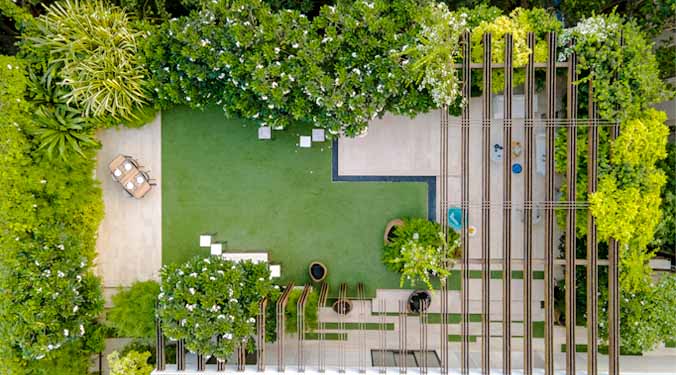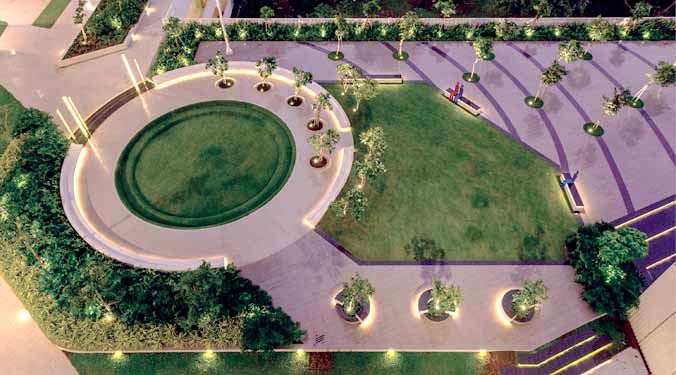The perfect landscape requires a thorough understanding

Kunal Maniar speaks on the essentials of landscape design and alternatives for the same in urban areas where space is a constraint.

How does landscaping help a city breathe?
I think planning our cities to include greenery and open spaces wherever possible is a key step to making our surroundings healthier, and more breathable. Green spaces help to reduce the urban heat island effect, and contribute to more forgiving microclimatic conditions. Thoughtful street planting design can positively impact air quality in traffic ridden areas by using certain tree species that are particularly effective at carbon capture and mitigating air pollution. Weaving open spaces such as pocket parks and plazas into the urban fabric can provide respite from the woeful feeling of congestion, and literally give citizens a bit of breathing space.
Having said that, what kind of regulations are required to ensure that urban areas have the desired space available for landscaping in the future?
The World Health Organisation (WHO), recommends that every city should provide a minimum of 9 m^2 of accessible, safe, and functional urban green space for each person. While this may seem overly idealistic given the context of the contemporary Indian city, I think keeping it in mind whilst setting out urban planning regulations is crucial. I also feel that its important to have more regulation to allow urban voids, derelict land, and brownfield sites to realise their potential as parks and urban forests, instead of leaving them vulnerable to being grabbed by developers and private enterprises.

What are some of the essential components desired to design the perfect landscape?
According to me, designing a “perfect” landscape is only possible when you have a robust understanding of the context and existing conditions of a site- including features like orientation, topography, soil characteristics, drainage, and the needs of the users of the space. Once context is understood, a designer can confidently play with line, form, materiality, texture, colour, scale, light and shadow to create a harmonious softscape and hardscape. When it comes specifically to softscape and curating the perfect planting palette, it’s all about respecting existing vegetation, prioritising indigenous, low maintenance varieties, clever companion planting, playing with scale through layering, and of course, keeping in mind seasonality to ensure year- round interest.
Especially in cities with space constraints, are there any ready alternatives?
Absolutely! Green roofs are an ideal way to integrate nature into cities with space constraints. Aside from the aesthetic value they bring to residents, green roofs play an instrumental role in stormwater management, supporting biodiversity and the creation of microclimates in the city. Linear networks within cities also offer great landscaping opportunities despite space constraints- this could include planting along rail lines, and developing rich riparian corridors. Another idea within landscape urbanism that I always advocate for is wider use of permeable paving
options like grass pavers, which not only look fantastic, but also reduce storm water runoff, and are an easy step towards effective flood mitigation.
For more info visit : https://www.archdaily.com/professional/kunal-maniar-and-associates?ad_source=office
Cookie Consent
We use cookies to personalize your experience. By continuing to visit this website you agree to our Terms & Conditions, Privacy Policy and Cookie Policy.









